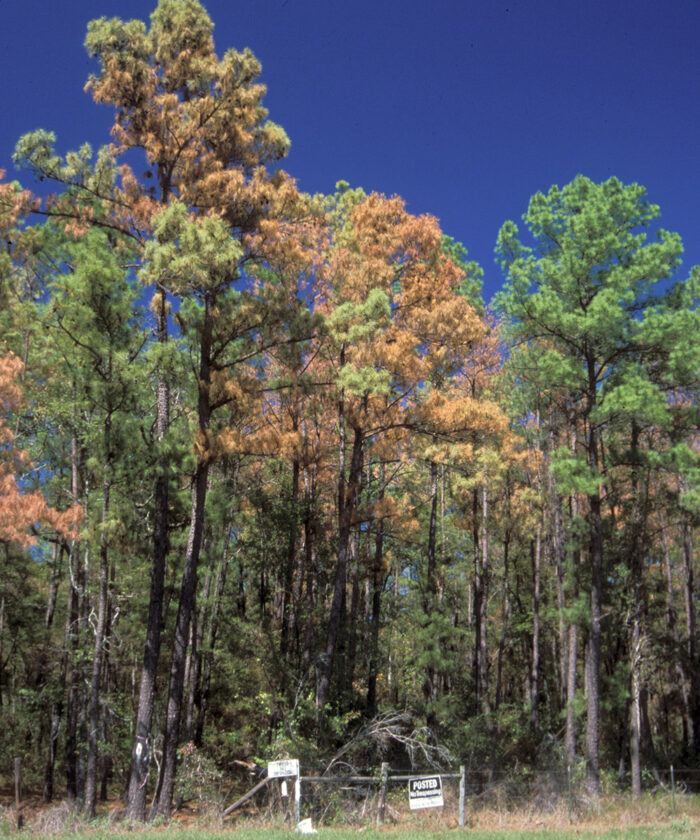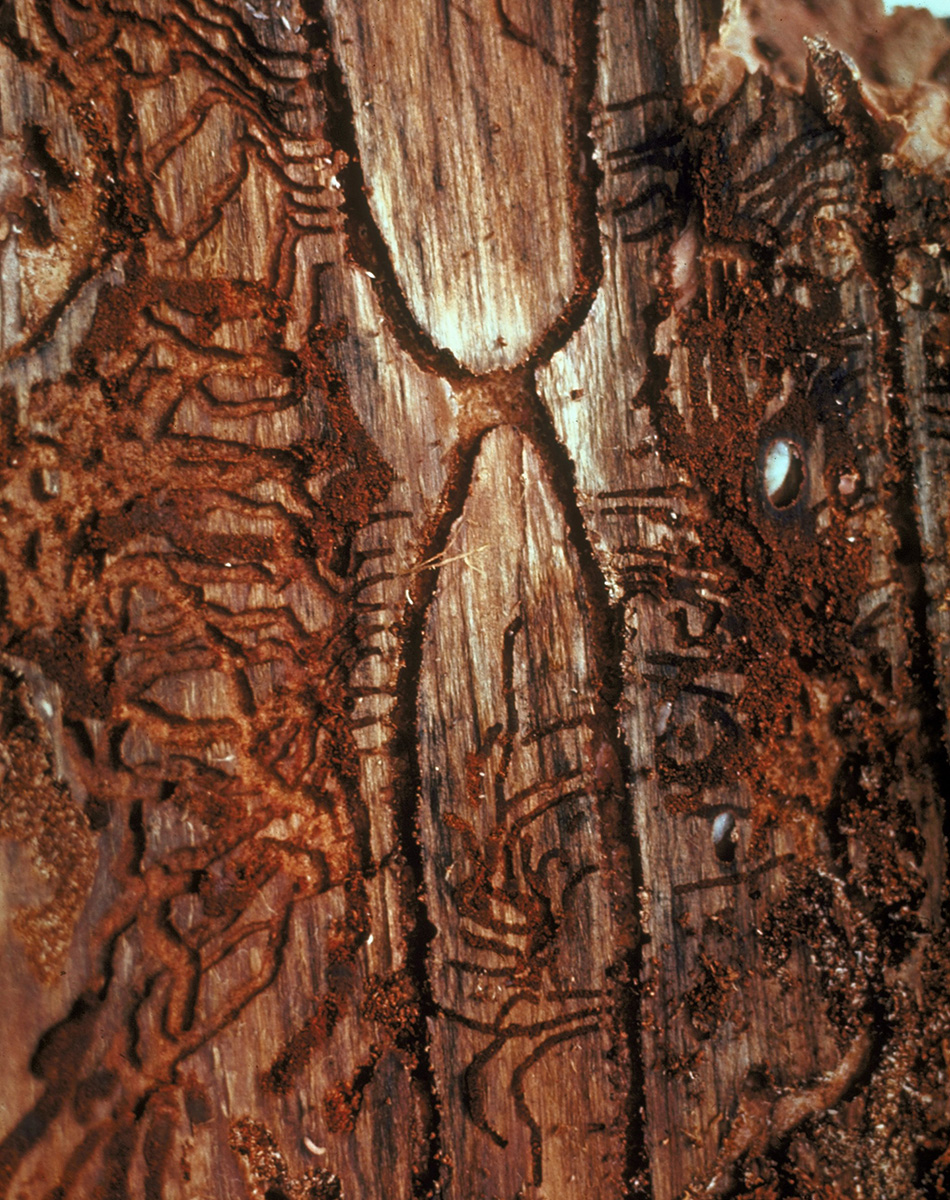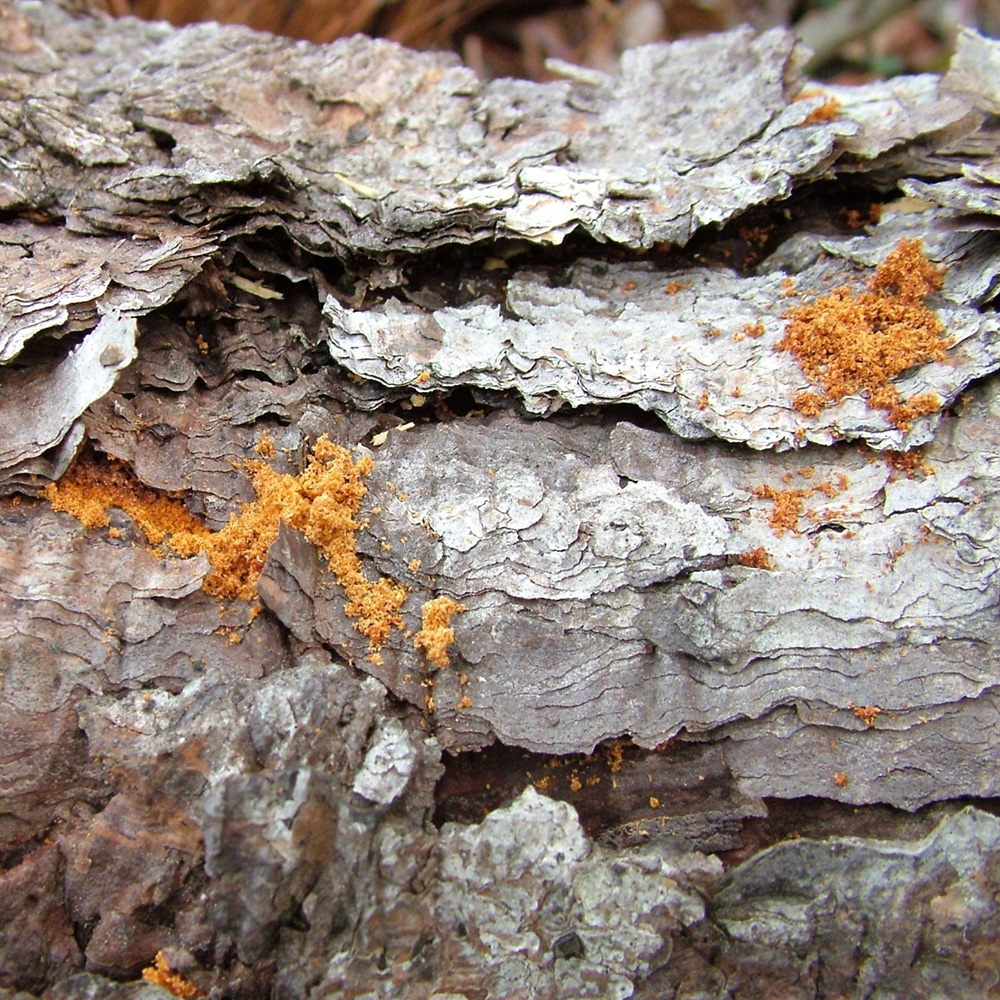
Many of us who call the Rockies home are familiar with the devastation to our forests by the mountain pine beetle (Dendroctonus ponderosae). Millions of acres of lodgepole pines (Pinus contorta, Zones 4–10) turned red and defoliated in just a few short years after this pest was introduced, leaving massive amounts of fuel for our recent intense wildfires.
Ips beetles at a glance
While not as devastating, there are similar-looking bark beetles that can impact the conifers in our natural environment and your garden. There are 11 different species of ips beetle, sometimes called “engraver beetles,” found in Colorado alone. Each species of ips beetle targets a different type of spruce (Picea spp. and cvs., Zones 2–8) or pine (Pinus spp. and cvs., Zones 2–9).
There are two key differences between mountain pine beetles and ips beetles:
- Mountain pine beetles attack healthy trees. Fortunately, ips beetles rarely do so. They go for trees under stress, newly planted trees, or recently pruned trees (freshly cut wood is a preferred breeding site).
- When mountain pine beetles attack a tree, it dies, pure and simple. However, damage from ips beetles may only show up in a section of the tree—usually at the top or on a couple of branches. It does not necessarily mean the tree will die.

What to look for
Damage from ips beetles shows up in the form of dead or dying branches. You may see small round holes in the bark, meaning that the adult beetles have moved on—maybe to another spot in the tree or to another tree. You may also see reddish sawdust (boring dust) caught in the bark or at the base of the tree. If you pull the bark off a dead section of the tree, you will see a series of tunnels that the beetles bored into the tree—hence the name “engraver beetle.”

Prevention and treatment
Since ips beetles primarily attack stressed trees, primary prevention strategies include good cultural practices that promote growth. Regular watering (including winter watering) and reducing root damage will minimize stress.
If you are pruning your conifers, remove the debris from the site immediately, as this will attract ips beetles to the area. Never store pine or spruce firewood near living conifer trees—you are only inviting ips beetles to feast.
If you do those two things, you will very rarely need to do anything else. That being said, if you have a newly planted tree that you are worried about, or you know ips beetles are in the neighborhood, you may choose to do more. Chemical products with permethrin, bifenthrin, or carbaryl may be used to prevent infestation in extreme circumstances. Follow the directions on the packaging, or talk to a licensed applicator. You will typically need to apply in spring and summer, as ips beetles have several reproductive cycles in one growing season. Once a tree is infested, however, there is no insecticide that can eliminate the problem.
Drought increases infestations
It is important to note that the ongoing extreme drought impacting most of the Mountain West is considered a stressor to our native trees. In addition, more people are clearing plant material from around their homes in order to prevent wildfires—including spruces and pines. More ips beetle activity and damage may result.
For more information, please visit extension.colostate.edu or your state forest service website. You will find information on the various species of ips beetles in your area.
—Michelle Provaznik is executive director of the Gardens on Spring Creek in Fort Collins, Colorado.
Fine Gardening Recommended Products

Corona High Performance Orchard Loppers
Fine Gardening receives a commission for items purchased through links on this site, including Amazon Associates and other affiliate advertising programs.

Pruning Simplified: A Step-by-Step Guide to 50 Popular Trees and Shrubs
Fine Gardening receives a commission for items purchased through links on this site, including Amazon Associates and other affiliate advertising programs.

ARS Telescoping Long Reach Pruner
Fine Gardening receives a commission for items purchased through links on this site, including Amazon Associates and other affiliate advertising programs.



















Comments
Hey, do you have any advice on how to deal with rabbits(they've been destroying bark on my apple trees this season). My uncle told to me to just get a rifle from some online gun store and just hunt 'em for few days, but I would prefer some less extreme option if it's possible, maybe some sort of repelant? Thanks in advance!
Log in or create an account to post a comment.
Sign up Log in